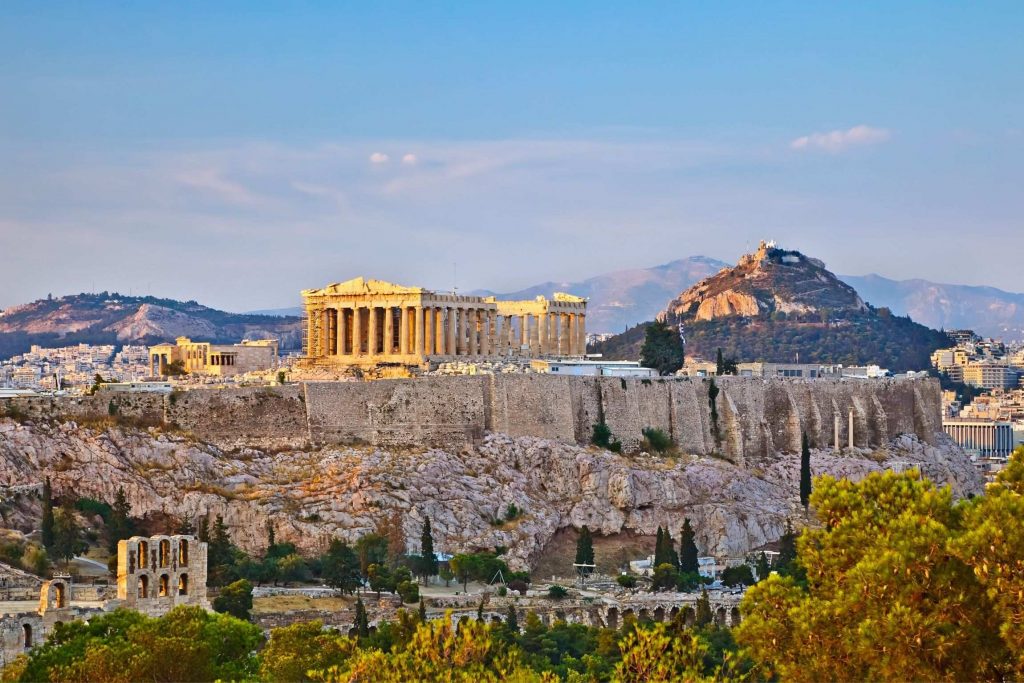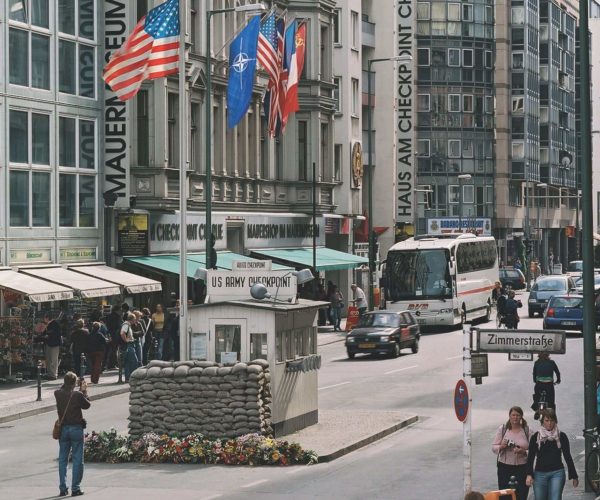Travelling across Europe, students can learn important lessons on the ground about our shared history and gain a better understanding of important events that have shaped the world we live in today. From Ancient Greece to the Cold War, we share the best history school trips in Europe for students:

ANCIENT GREECE
Birthplace of democracy, the Latin alphabet and the Olympics, Greece is an unmissable destination for history students and the best place in Europe to learn about the foundations and origins of Western civilisation.
Visiting important archaeological sites such as the Acropolis in Athens and Olympia, students will travel back in time and learn about the extraordinary legacy of Classical Greece and how their knowledge is still relevant in today’s society.
From the teachings of Plato and Aristotle to the mathematical discoveries of Pythagoras and Archimedes, Ancient Greece thinkers gave us incredible ideas and contributions in science, philosophy, politics, art, astronomy. The word Philosophy comes from Greek: ‘lover of wisdom’.
Greece is definitely a must-visit and top of our list of best history school trips in Europe and the world.
Find more details: ANCIENT GREECE SCHOOL TRIP
THE MIGHTY ROMAN EMPIRE
The Roman Empire that lasted 500 years was one of the largest in the world and reached as far as North Africa and Asia.
Rome and Pompeii are unrivalled destinations to learn more about life at the time of this mighty Empire which was believed to have no end, ‘Imperium sine fine’. While the Roman Empire eventually did meet an end, it left its mark across Europe, from politics to architecture and infrastructure.
In Rome and Pompeii, Classical Studies and History students will learn about life in Ancient Rome in extraordinary settings such as the spectacular Colosseum amphitheatre which entertained citizens and the Roman Forum, the heart of political and social life in Rome.
As a disastrous volcanic eruption buried the whole city in 79 AD, Pompeii remained untouched underground for hundreds of years until it was first excavated and identified in the 18th century.
The UNESCO-listed Pompeii archaeological park offers a fascinating window into daily life in an Ancient Roman city, as buildings, streets, artefacts and human bodies have stayed frozen in time since that fateful day. A memorable destination among our top history school trips in Europe.
More details: BEST OF ROME SCHOOL TRIP and ROME POMPEII AND BAY OF NAPLES SCHOOL TRIP
WWI BATTLEFIELDS ON THE WESTERN FRONT
World War I, also known as the Great War, ravaged Europe between 1914 and 1918. Place names like Ypres, Flanders and the Somme have become forever intertwined with the history of the conflict.
Villages and towns in Belgium and Northern France were the backdrop to some of the war’s bloodiest and most dramatic episodes. Over one million people died at the Battle of the Somme and half a million perished at the Battle of Passchendaele, the Third Battle of Ypres.
The region is a pilgrimage destination for history buffs and Great War scholars, dotted with battle sites, cemeteries, museums and memorials dedicated to those who lost their lives on the ‘Western Front’, as well as a stark reminder of the futility of war.
Two fantastic museums: In Flanders Fields Museum and Memorial Museum Passchendaele 1917 offer a comprehensive interpretation of the conflict as well as recreating life in the trenches and dugouts where so many young soldiers perished.
More details: WWI BATTLEFIELDS SCHOOL TRIP

WWII BATTLEFIELDS OF NORMANDY
Another area of important battle sites and war memorials is the region of Normandy, in Northern France.
It was here in the beaches of Normandy where the D Day landings took place in June 1944, marking the beginning of the end of another bloody conflict: World War II.
Over 150,000 Allied troops from Britain, Canada and the United States landed on the beaches along the coast of Normandy, known by code names such as Juno, Gold or Omaha.
Museums such as Utah Beach Landing Museum and Airborne Museum, memorials and soldier cemeteries such as Ranville War Cemetery and the Normandy American Cemetery honour the memory of those who lost their lives in the conflict.
More details: WWI BATTLEFIELDS OF NORMANDY SCHOOL TRIP
HOLOCAUST IN AUSCHWITZ AND KRAKOW
Located approximately 35 kms outside Krakow, the harrowing Auschwitz Birkenau Concentration Camp memorial and museum has become a synonym of the Holocaust and the atrocities committed during the Nazi regime.
Auschwitz was the largest concentration and extermination camp run by the Nazis during World War II, and over 1 million people were killed here. Most of them were Jewish but the victims also included political prisoners, Roma, soviet soldiers and others.
In Krakow, students can wonder the streets of the Jewish Quarter, Kazimierz District, and imagine the vibrant Polish Jewish community that lived here until the Nazi invasion in the 1930s.
They can also visit the factory of Oskar Schindler, a businessman who rescued over a thousand people during the war and whose story was turned into an Oscar-winning film by Steven Spielberg’s: Schindler’s List.
Both Auschwitz and Krakow are unmissable for history students and on our top history school trips in Europe.
More details: KRAKOW AND AUSCHWITZ HISTORY SCHOOL TRIP
THE BERLIN WALL
Berlin is without a doubt one of our favourite destinations for many reasons but it has fascinating lessons to learn and therefore among our best history school trips in Europe.
In the aftermath of WWII, the world found itself divided along two lines, giving way to a period known as the Cold War. This episode of complicated geopolitics and divisions between East and West, were poignantly represented by the Berlin Wall that divided the city in two from 1961 until its fall in 1989.
Checkpoint Charlie was during that time one of the main crossing points between East and West and today students can visit the Mauermuseum Haus am Checkpoint Charlie, a museum displaying photographs as well as ingenious ways that Germans tried to cross the border. The museum also researches and keeps a list of those who perished trying to cross the ‘Iron Curtain’.
Running for 1.3kms along the Spree, we find the East Side Gallery, a reminder of the concrete wall that once divided the city. It is the longest stretch of the Berlin Wall still standing and it was given memorial status in 1990, after artists from different countries began to paint it and turned its grey concrete into a colourful open air gallery.
More details: BEST OF BERLIN SCHOOL TRIP
Talk to our travel experts about our best history school trips in Europe and your travel ideas, to start planning your school tour.
Contact Us



